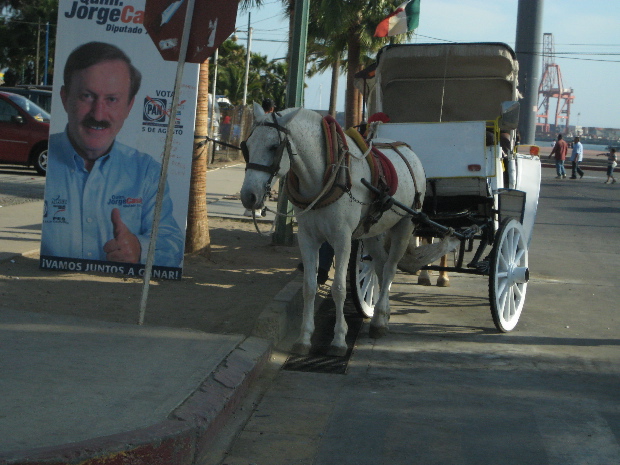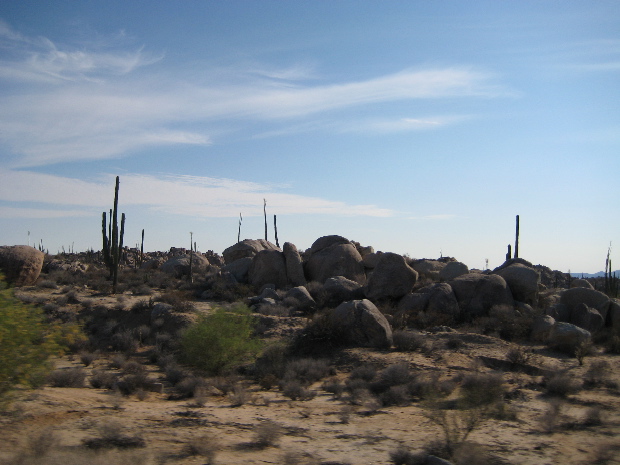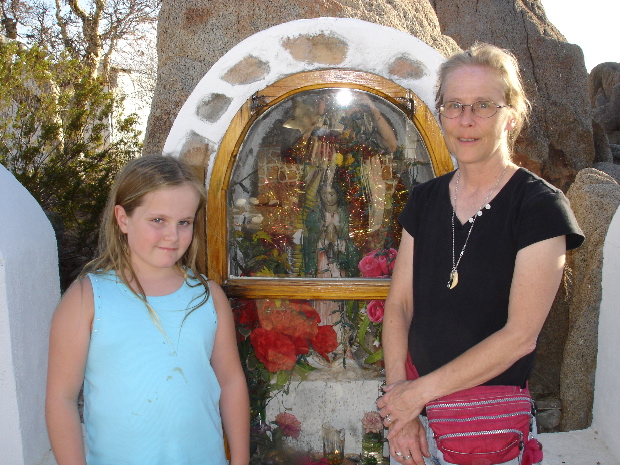
The
first time I visited Ensenada (above) in the late Sixties it was a
small, dusty
tourist town. Now it's a big, sprawling tourist town but still
has some charm. Above Ensenada on the Pacific coast, yuppie scum,
mostly from Alta California, the world headquarters of yuppie scum, has
turned the region into into a nightmare of condos, tourist traps and
perverted, groveling commercialism. This is where you see the
true face of Alta California, “The Wellness State”. The influence
of the Great Satan begins
to wear away the further south you go — only to
flare up again like a festering boil at Cabo San Lucas at the tip of
the peninsula.

On our first full day in Mexico we made it as far as Catavina, a tiny
town in a bizarre high-desert setting in the middle of the
peninsula. (Mexico 1, the only road that goes all the way down to
Cabo San Lucas, zig-zags back and forth across Baja California, from
one coast to the other.) The desert around Catavina is covered in gigantic, car-sized boulders
and tall cactus — like much of Baja California its landscape is
surreal in the extreme, with an effect on the psyche that can't be evoked by
photographs.
In Catavina we stayed at a La Pinta inn. These are dotted along
Mexico 1, are run by the government and are very pleasant, with a
cantina and restaurant surrounding a small courtyard fountain and rooms
surrounding a larger courtyard with a pool. Mexicans pay about
$57 (American) a night there — rates for tourists can rise up over
$100 a night, but my sister quickly discovered that Mexican hotel
clerks love
to bargain, especially if the negotiation is conducted with humor, so
we paid well under the tourist rate wherever we stayed. The
clerks always seemed genuinely delighted when Lee managed to talk them
into lowering their rate, as though they were appreciating a clever
goal from an unlikely player in a soccer game.

The terrace behind the restaurant at the Catavina La Pinta looks out
over the mystical desert and has a shrine dedicated to Nuestra Señora
de Guadalupe, which puts everything into perspective. When
driving the roads of Baja California you want constant assurances that La Morenita
is with you, and you want a chance to thank her for getting you to
wherever it is you've gotten. This is psychologically sound,
whatever you think of the theology of it, because it reminds you to
never, ever
take Mexico 1 for granted. It's full of surprises, most
delightful but some hair-raising. I'll write more about Mexico 1 in a later post.
For previous Baja California trip reports, go here.
[Photos © 2007 Harry Rossi & Lloyd Fonvielle]
